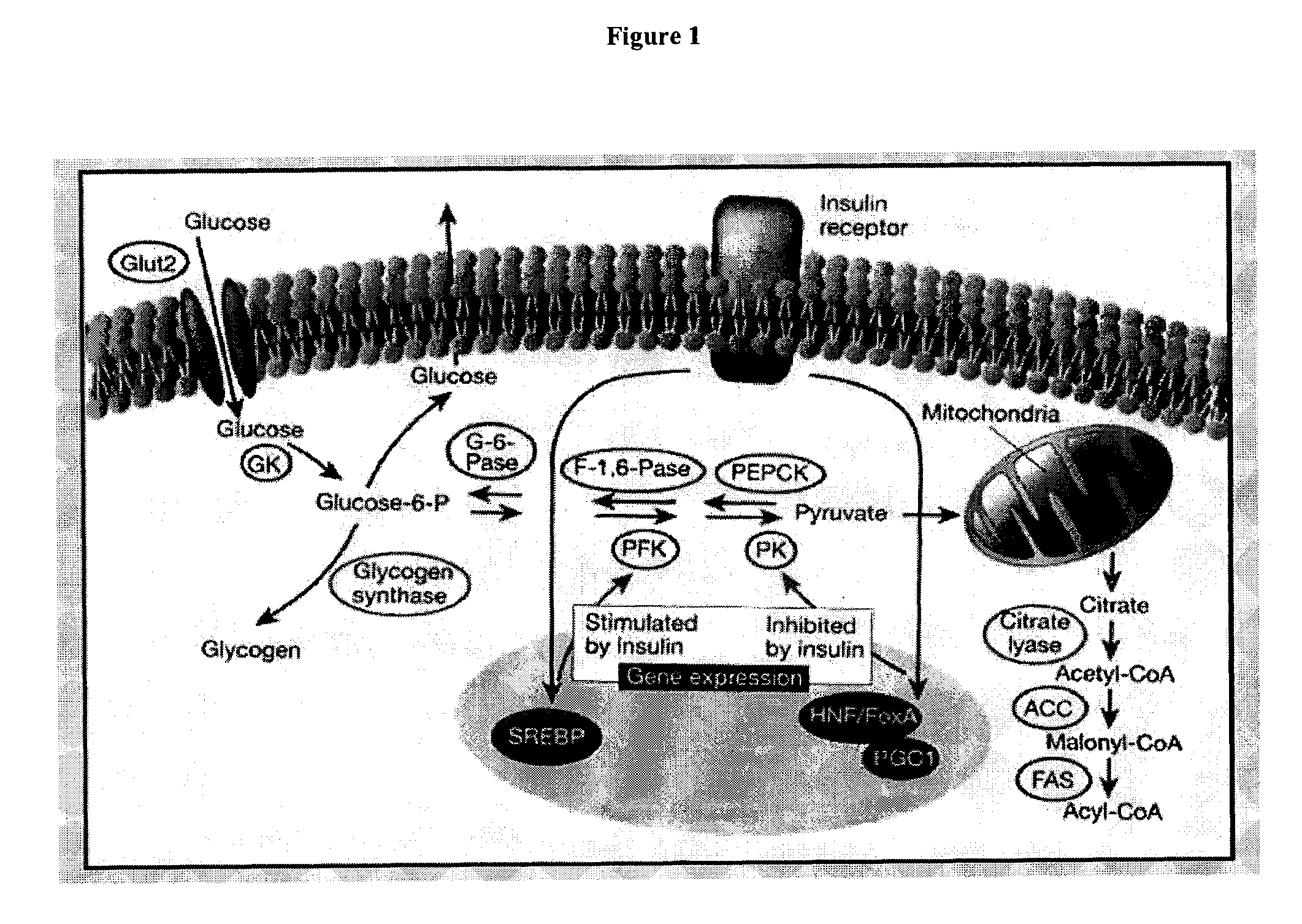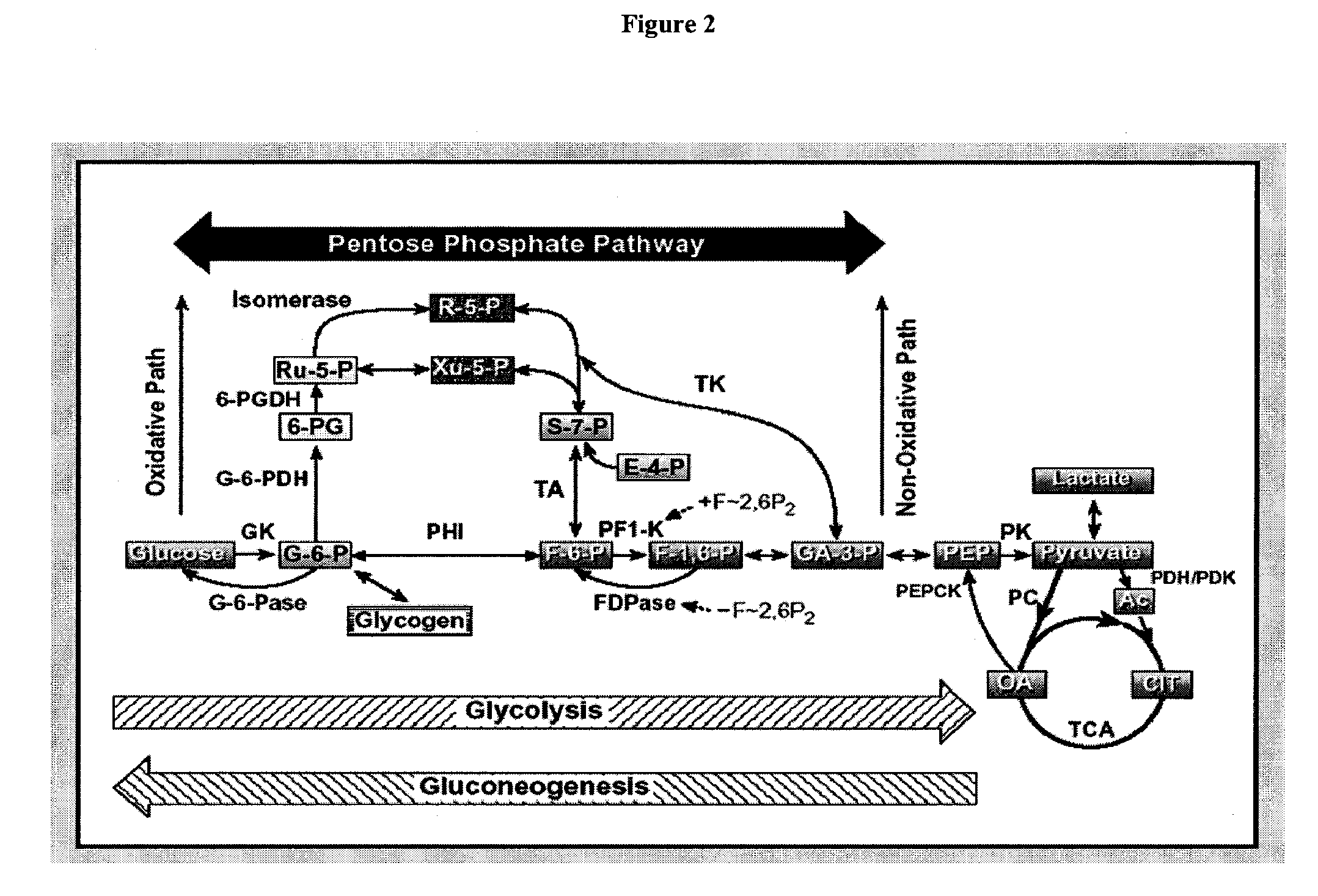Monitoring of the inhibition of fatty acid synthesis by iodo-nitrobenzamide compounds
a technology of iodonitrobenzamide and iodonitrobenzamide, which is applied in the direction of biocide, drug composition, metabolic disorder, etc., can solve the problems of limited in vivo activity of cerulenin, and achieve the effect of inhibiting fatty acid synthesis
- Summary
- Abstract
- Description
- Claims
- Application Information
AI Technical Summary
Benefits of technology
Problems solved by technology
Method used
Image
Examples
example i
[0249]Goal: This study relates to analyzing the effect of the 3-nitro-4-iodobenzamide (compound of formula III) in vitro on cultured OVCAR-3 cells' and HeLa cells' metabolic fluxes using [1,2-13C2]-D-glucose as the only source of glucose. The analysis includes correlating fluxes with cell growth-modifying effect, analyzing mechanism of anti-proliferative action and analyzing potential toxicity, selectivity, and efficacy. Target metabolites include glucose (culture medium and pellet glycogen), lactate (culture medium), 13CO2 (culture medium), C:14 (myristate); C:16 (palmitate); C:18 (stearate); C:18-1 (oleate); C:20; C:22; C:24 (cell pellet), acetyl-CoA synthesis for fatty acids (cell pellet), and RNA ribose and DNA deoxyribose (cell pellet). Target fluxes include glucose uptake from culture media; lactate production from glucose (anaerobic glycolysis); 13CO2 release from glucose via TCA cycle; glycogen synthesis; de novo fatty acid synthesis, elongation, desaturation and acetyl-CoA ...
PUM
| Property | Measurement | Unit |
|---|---|---|
| humidity | aaaaa | aaaaa |
| humidity | aaaaa | aaaaa |
| humidity | aaaaa | aaaaa |
Abstract
Description
Claims
Application Information
 Login to View More
Login to View More - R&D
- Intellectual Property
- Life Sciences
- Materials
- Tech Scout
- Unparalleled Data Quality
- Higher Quality Content
- 60% Fewer Hallucinations
Browse by: Latest US Patents, China's latest patents, Technical Efficacy Thesaurus, Application Domain, Technology Topic, Popular Technical Reports.
© 2025 PatSnap. All rights reserved.Legal|Privacy policy|Modern Slavery Act Transparency Statement|Sitemap|About US| Contact US: help@patsnap.com



